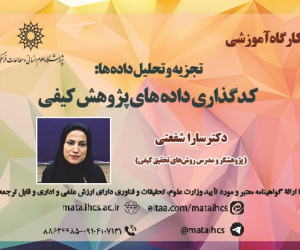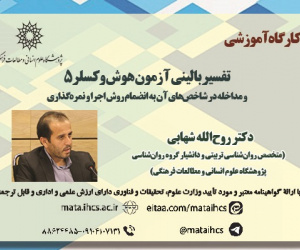چارچوب ارزیابی ظرفیت تحول دیجیتال در فدراسیون فوتبال عراق (مقاله علمی وزارت علوم)
درجه علمی: نشریه علمی (وزارت علوم)
آرشیو
چکیده
هدف: هدف از این پژوهش، ارائه چارچوب تحلیل ظرفیت تحول دیجیتال در فدراسیون فوتبال عراق بود.روش شناسی: روش پژوهش از نوع آمیخته کیفی (رویکرد تحلیل مضمون) و کمی (رویکرد توصیفی-تحلیلی) بود. در بخش کیفی از صاحب نظران علمی (اساتید و متخصصان) و اجرایی (مدیران و خبرگان اجرایی) نظرخواهی شد (15 نفر= نمونه گیری قضاوتی). در بخش کمی نیز بر مبنای تعداد قابل کفایت برای تحلیل راهبردی (20 تا 60 نفر) از مدیران و کارشناسان فدراسیون فوتبال عراق به روش هدفمند نمونه گیری شد (31 نفر). ابزار پژوهش در بخش کیفی شامل مصاحبه نیمه هدایت شده به همراه مطالعه کتابخانه ای ساختارمند بود. در بخش کمی نیز از پرسشنامه مستخرج از بخش کیفی (43 سوال در مقیاس 10 گزینه ای ارزیابی) استفاده شد. روایی ابزار و یافته ها در بخش کیفی از طریق توافق بین مصصحان کدگذاری و در بخش کمی از طریق روایی محتوایی پرسشنامه (6 متخصص) و پنل دلفی تایید شد.یافته ها: یافته ها نشان داد که چارچوب تحلیل ظرفیت تحول دیجیتال فدراسیون های ورزشی شامل 43 شاخص، 13 بُعد و 4 منظر کلی است. یافته های کمی نیز نشان داد که بیشترین شکاف ظرفیت تحول دیجیتال مربوط به خدمات و پشتیبانی دیجیتال (4/97) و کمترین شکاف مربوط به محیط کار دیجیتال (3/23) است.Provide a Framework for Capacity Assessment of Digital Transformation in Iraqi Football Federation
Objective: The purpose of this research was to provide a framework for analyzing the capacity of digital transformation in Iraqi football federation.Methodology: The research method was a combination of qualitative (thematic analysis approach) and quantitative (descriptive-analytical approach). In the qualitative part, opinions were sought from scientific (professors and specialists) and executive (managers and executive experts) experts (15 people = judgmental sampling). In the quantitative part, based on a sufficient number for strategic analysis (20 to 60 people), managers and experts of the Iraqi Football Federation were sampled in a targeted way (31 people). The research tool in the qualitative part included a semi-guided interview along with a structured library study. In the quantitative section, a questionnaire extracted from the qualitative section (43 questions on a 10-choice evaluation scale) was used. The validity of the tools and findings was confirmed in the qualitative part through the agreement between the coders and in the quantitative part through the content validity of the questionnaire (6 experts) and the Delphi panel.Results: The findings showed that the analysis framework of digital transformation capacity of sports federations includes 43 indicators, 13 dimensions and 4 general perspectives. Quantitative findings also showed that the biggest gap in digital transformation capacity is related to digital services and support (4.97) and the lowest gap is related to digital work environment (3.23).Conclusion: Based on the findings, it can be said that digital transformation in Iraqi sports federations is a multidimensional structural, human, infrastructural and functional category and requires continuous recognition and evaluation based on valid indicators.








